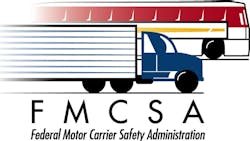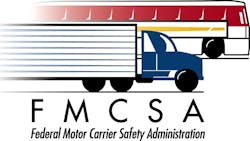Solutions in search of problems? Insurance, ELDs, speed limiters on ‘hectic’ FMCSA 2015 calendar
Jan. 14, 2015
7 min read
The year 2015 looks to be a big and busy one for the Federal Motor Carrier Safety Administration, both in terms of the number of items on the regulatory agenda and in their significance to the trucking industry.
Among the highlights are a revamping of the way carrier safety is evaluated and rated, an electronic logging mandate, a speed limiter requirement, a drug and alcohol testing database, possible changes to insurance minimums and driver coercion protection.
American Trucker spoke recently with Ryan Bowley, director of government affairs for the Owner-Operator Independent Drivers Assoc. (OOIDA) about the key issues truckers should be aware of.
High on the OOIDA list of concerns is FMCSA’s reconsideration of minimum levels of financial responsibility for carriers, including liability coverage. Bowley calls the effort “a solution in search of a problem.”
“Nowhere have I ever seen an agency move forward with addressing a requirement that has a 99.9 percent success rate,” Bowley said, referring to the current minimum coverage, $750,000. “Owner-operators, small business truckers, everyone across the industry – unless you’re the biggest of the big fleets – should be watching, be engaged and be concerned about the impact an increase would have.” (See the DAT Solutions chart below; DAT’s complete analysis is here.)
Bowley also questions why FMCSA, whose calendar includes a number of items that are well behind schedule, would commit its resources to a regulation that will hardly “move the needle.”
“The agency has busted a number of statutory deadlines on issues required by Congress – some of which we support and are frustrated that progress has been slow,” Bowley said. “Spending time and attention on this makes us concerned that it’s a big priority, and they’re going to move forward. Where’s the justification?”
(The comment period for this notice closes Feb. 26. They are collected and posted here.)
The electronic log rulemaking is “always a hot one” for OOIDA, which successfully challenged the previous rule in court, arguing that the regulation did not address driver harassment.
“The agency has put the cart before the horse,” Bowley said. “The [ELD] supplemental notice came out before FMCSA had even gone out on the street with their driver harassment survey. We also had a lot of problems with the survey when it came out and the analysis. It was typical FMCSA science: There were a lot of holes. We don’t think they addressed a lot of our concerns, or the court’s concerns over driver harassment.”
Additionally, the harassment objection was just one among many in the OOIDA case – and it was sufficient for the court to throw the rule out. But, Bowley explained, the association believes a number of its other issues were valid – and those are still “live.” He declined, however, to go into detail and discuss OOIDA’s plans as the ELD rules moves forward.
As for a speed limiter regulation, OOIDA contends a resulting increase in speed differentials between heavy trucks and other traffic will have a negative impact on safety.
“Both FMCSA and NHTSA haven’t really looked at the other side of the coin,” Bowley said.
As does American Trucking Assns., OOIDA questions moving forward with a new safety rating system based on CSA and the “well documented” problems with it. (SeeATA’s top concerns on Fleet Owner.)
“It’s not just the methodology of CSA,” Bowley said. “You’ve got a system that take into consideration over 750 different regulatory violations and fewer than 20 of those have a connection to crash propensity. We really need to take a good hard look at the body of regulations to determine which have a causal relation to crashes – not just a correlation. That should be the foundation [of the Safety Fitness Determination rule].”
One area of federal regulation that OOIDA “very, very much” supports is the development of entry-level driver training standards – an area that has languished at FMCSA for years, despite a mandate from Congress. The agency, however, did initiate a negotiated rulemaking in late 2014, meaning that the drafting and review process would be shortened if a committee of stakeholders can agree on what those standards should include.
“At least within some levels of the agency, and certainly across the industry, there’s anxiousness to get moving on this,” Bowley said. “But we need to make sure it’s done in a deliberate manner that assures there’s good input from all sides and we actually get a rule that makes an impact, not just something that lets you check a few boxes and that counts as driver training.”
And these are just the items at the top of the list for owner-ops and small fleets to pay attention to.
“It’s not going to be a slow year, that’s for sure – but I don’t think there ever are, anymore,” Bowley concludes. “But this one has the potential to be quite hectic.”
The complete list of FMCSA regulatory initiatives and publication dates scheduled for 2015, as published in the Dept. of Transportation’s January update, is below. Popular Title: Diabetes Standard
Stage: NPRM
Original publication date: 11/30/2010
Current Projected Date: 07/03/2015
This rulemaking action would amend FMCSA´s medical qualification standards to allow drivers with insulin-treated diabetes mellitus to operate commercial motor vehicles in interstate commerce, without seeking an exemption from the FMCSRs. Popular Title: Carrier Safety Fitness Determination
Stage: NPRM
Original publication date: 03/29/2008
Current Projected Date: 06/17/2015
FMCSA proposes to amend the Federal Motor Carrier Safety Regulations (FMCSRs) to adopt revised methodologies that would result in a safety fitness determination (SFD). Popular Title: CDL Drug and Alcohol Clearinghouse
Stage: Final Rule
Original publication date: 09/16/2015
Current Projected Date: 10/30/2015
This rulemaking would create a central database for verified positive controlled substances and alcohol test results for commercial driver´s license (CDL) holders and refusals by such drivers to submit to testing.Popular Title: ELDs and HOS supporting documents
Stage: Final Rule
Original publication date: 09/30/2015
Current Projected Date: 09/30/2015
This rulemaking would establish: (1) minimum performance and design standards for hours-of-service (HOS) electronic logging devices (ELDs); (2) requirements for the mandatory use of these devices by drivers currently required to prepare HOS records of duty status (RODS); (3) requirements concerning HOS supporting documents; and (4) measures to address concerns about harassment resulting from the mandatory use of ELDs.Popular Title: Prohibition of Coercion
Stage: Final Rule
Original publication date: 09/10/2015
Current Projected Date: 09/10/2015
Section 32911 of MAP-21 amended 49 U.S.C. § 31136(a) to require that regulations governing commercial motor vehicle safety ´ensure ... an operator of a commercial motor vehicle is not coerced by a motor carrier, shipper, receiver, or transportation intermediary to operate a commercial vehicle in violation of a regulation promulgated under 49 U.S.C. § 31136 or chapters 51 or 313 of title 49, U.S.C.’Popular Title: Heavy Vehicle Speed Limiters
Stage: NPRM
Original publication date: 03/24/2014
Current Projected Date: 05/07/2015
This joint rulemaking with NHTSA would respond to petitions from ATA and Roadsafe America to require the installation of speed limiting devices on heavy trucks. Popular Title: MAP-21 CDL Requirements
Stage: NPRM
Original publication date: 05/18/2015
Current Projected Date: 02/25/2016
This rulemaking would grant military veterans an exemption from the domicile requirement, allowing the State they are stationed in to issue them a commercial driver’s license. (Substantially delayed in January 2015 update.)Popular Title: Minimum Levels of Financial Responsibility
Stage: ANPRM
Publication date: 11/28/2014
End of comment period: 02/26/2015
The FMCSA announces that it is considering a rulemaking to increase the minimum levels of financial responsibility for motor carriers, including liability coverage for bodily injury or property damage in the case of freight and passenger motor carriers, including liability coverage for bodily injury or property damage in the case of freight and passenger motor carriers.
About the Author
Kevin Jones
Editor
Kevin has served as editor-in-chief of Trailer/Body Builders magazine since 2017—just the third editor in the magazine’s 60 years. He is also editorial director for Endeavor Business Media’s Commercial Vehicle group, which includes FleetOwner, Bulk Transporter, Refrigerated Transporter, American Trucker, and Fleet Maintenance magazines and websites.
Working from Beaufort, S.C., Kevin has covered trucking and manufacturing for nearly 20 years. His writing and commentary about the trucking industry and, previously, business and government, has been recognized with numerous state, regional, and national journalism awards.
Sign up for our eNewsletters
Get the latest news and updates



